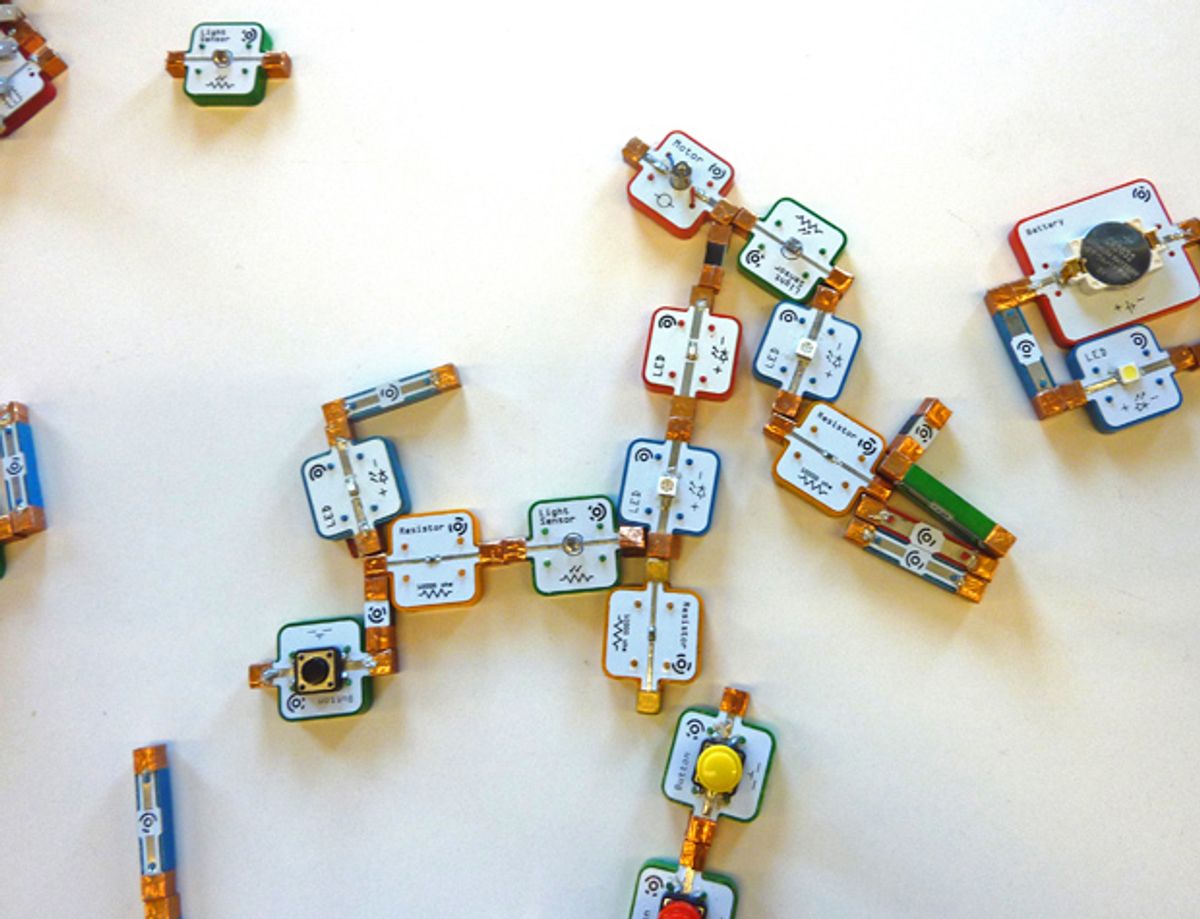This week Haxlr8r, one of the first hardware-only accelerator programs, launched its second class. Haxlr8r is especially interesting for its international approach—it requires its teams to spend most of the three months they spend under Haxlr8r’s wings in Shenzhen, China. Explained Zach Hoeken Smith, program director for Haxlr8r: “Shenzhen is the best place in the world to design and build products.” Being there, he says, allows entrepreneurs to quickly change their choices of components, boards, and other parts because they can get their hands on just about anything they might put in a final product within minutes or hours, rather than days or weeks. Entrepreneurs there can also quickly find the right manufacturing partner, and sit down with experts to refine their designs to maximize their manufacturability in the early stages, not after prototypes are complete.
“We believe,” says Smith, “that you don’t wait until you get a million bucks on Kickstarter before you work with manufacturing.”
Of perhaps more immediate practical use were smart bike handlebars from California company Helios. Designed to replace standard bike handlebars (with clever screws and locks that prevent unauthorized removal), Helios Bars incorporate a 500 lumens LED headlight and rear facing multi-colored lights on the end of each handlebar, with batteries, controls, and a GPS module inside the handlebars. (See video, below.) A smartphone app allows riders to set a destination or adjust light colors. Synched to a smartphone, the US $200 Helios Bars turn the lights on when you get close to it, turn them off when you walk away. For navigation, after you set a destination with the phone, you can put the phone in your pocket; the lights on the handlebars will alert you to upcoming turns. The handlebar lights also act as turn signals and a speedometer, and change colors as the speed changes. I’m guessing the language of the lights will take a little getting used to, but then will be a lot simpler to follow than trying to read a smart phone on the move. Finally, if the bike is stolen, the owner can turn on the GPS tracker via text message and hunt it down.
The product that made me most want to reach out and touch it, just because it was so cute, is a learning tool aimed at middle schoolers from California company LightUp. This set of magnetically attached building blocks is designed to teach basic electronics concepts, but even without the electronics they’re just cool to snap together and take apart. Kits, which can be grouped together, sell for $30 to $200. The gear is Arduino compatible, for when kids are ready to take their constructions to the next (programmable) level. It comes with a smartphone app that not only suggests projects but shows them what's wrong when they make a mistake. (See video, below)
Another company I’ll be following with interest is Spark, from Minneapolis. Spark started out with a plan to market a twist-on Wi-Fi controller for light bulbs and put the project on Kickstarter, where it failed to reach its funding goal (thereby sending the money raised back to the investors). The Spark founders took that as a message to broaden their concept, and went on to develop a controller that would allow consumers (or manufacturers) to easily add Wi-Fi to any anything. They planned to initially sell the tiny Wi-Fi board for $39 to DIY’ers, but this month the company raised $260 000 ($250 000 more than its goal) in preorders on Kickstarter, so the appeal, this time, may be wider than they thought. Longer term, Spark is hoping to bring in large appliance manufacturers by charging them a one-time fee to license the software platform and purchase the API and cloud services required to support the Internet connection.
And certainly an interesting—dare I say brave—attempt to bring a lab technology to the consumer market was U.K. company Focus. However, I don’t think it’s quite ready for prime time. Focus is jumping on new interest in transcranial direct current stimulation (tDCS) as a way to improve brain power. The theory is that applying a small electrical current to the brain improves its function, helping learning, numerical processing, coordination—just about anything, depending on where the electrodes are placed. Users in laboratories have reported feeling calmer, clear-headed, sharper—so I stepped up to try Focus’s consumer version, which the company will be shipping in July for $249. I found it hugely unpleasant, sort of like shocking yourself with static electricity over and over. (The Focus folks suggested it was similar to licking a battery, and I’d get used to it. But I never was one to think licking batteries was fun.) I ended the experiment quickly when my vision became obscured by jagged white lines, an effect the Focus folks suggested came from placing the pads too close to my optic nerve. Focus intends to market the tDCS headset to gamers, to improve their focus and their scores; perhaps they’ll find it worth the side effects.
Also demonstrating were Fabule Fabrications with Clyde, a desk lamp with a choice of personalities; Molecule Synth, a modular music synthesizer that will intrigue hobbyists and DJs; Blinkiverse, with modular, programmable LED strips; Yeelink, a platform for home control; and Vibease, a $99 vibrator that synchs to smartphone audio porn “fantasies” available for 99 cents each. (The company displayed it in pink, I’m thinking they missed a bet not making it shades of grey.)
Photos: Top: Some of LightUp's circuit design modules. Middle: Full-size and mini autonomous helicopters from Hex. Credit: Tekla Perry.
Follow me on Twitter @TeklaPerry.
Tekla S. Perry is a senior editor at IEEE Spectrum. Based in Palo Alto, Calif., she's been covering the people, companies, and technology that make Silicon Valley a special place for more than 40 years. An IEEE member, she holds a bachelor's degree in journalism from Michigan State University.





